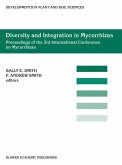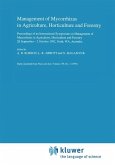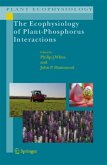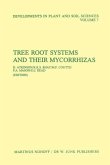This book is highly recommended on the basis of the following points:
- The editors are highly regarded in the field of mycorrhizal biology and one is co-author of the most comprehensive textbook on mycorrhizas;
- Chapters by international experts based on invited presentations at the 3rd International Conference on Mycorrhizas, supplemented by invited chapters on special topics;
- Mycorrhizas are being increasingly recognised as ubiquitous plant/fungal symbioses, with the potential to influence the function and ecology of around 90% of all land plants; perhaps the most common and also ancient terrestrial symbioses in existence;
- This book has a broad coverage of biology of symbioses between mycorrhizal fungi and plants, especially ecto- and arbuscular mycorrhizas (other recent texts have focused mainly on arbuscular mycorrhizal symbioses);
- Forward-looking review chapters by keynote speakers including an overview of research challenges for the future;
- Up-to-date research focus;
- Coverage includes: molecular diversity and detection of mycorrhizal fungi; cellular and molecular interactions between the symbionts; physiology of the interactions; implications of the symbioses for ecosystem processes, including agriculture;
- Several complementary chapters on some topics, ensuring that different perspectives are presented (recent edited volumes have had a smaller group of authors and hence narrower focus);
- Readership from advanced undergraduate students in biology (particularly plant science), postgraduate students and researchers in universities and government agencies.
- The editors are highly regarded in the field of mycorrhizal biology and one is co-author of the most comprehensive textbook on mycorrhizas;
- Chapters by international experts based on invited presentations at the 3rd International Conference on Mycorrhizas, supplemented by invited chapters on special topics;
- Mycorrhizas are being increasingly recognised as ubiquitous plant/fungal symbioses, with the potential to influence the function and ecology of around 90% of all land plants; perhaps the most common and also ancient terrestrial symbioses in existence;
- This book has a broad coverage of biology of symbioses between mycorrhizal fungi and plants, especially ecto- and arbuscular mycorrhizas (other recent texts have focused mainly on arbuscular mycorrhizal symbioses);
- Forward-looking review chapters by keynote speakers including an overview of research challenges for the future;
- Up-to-date research focus;
- Coverage includes: molecular diversity and detection of mycorrhizal fungi; cellular and molecular interactions between the symbionts; physiology of the interactions; implications of the symbioses for ecosystem processes, including agriculture;
- Several complementary chapters on some topics, ensuring that different perspectives are presented (recent edited volumes have had a smaller group of authors and hence narrower focus);
- Readership from advanced undergraduate students in biology (particularly plant science), postgraduate students and researchers in universities and government agencies.








